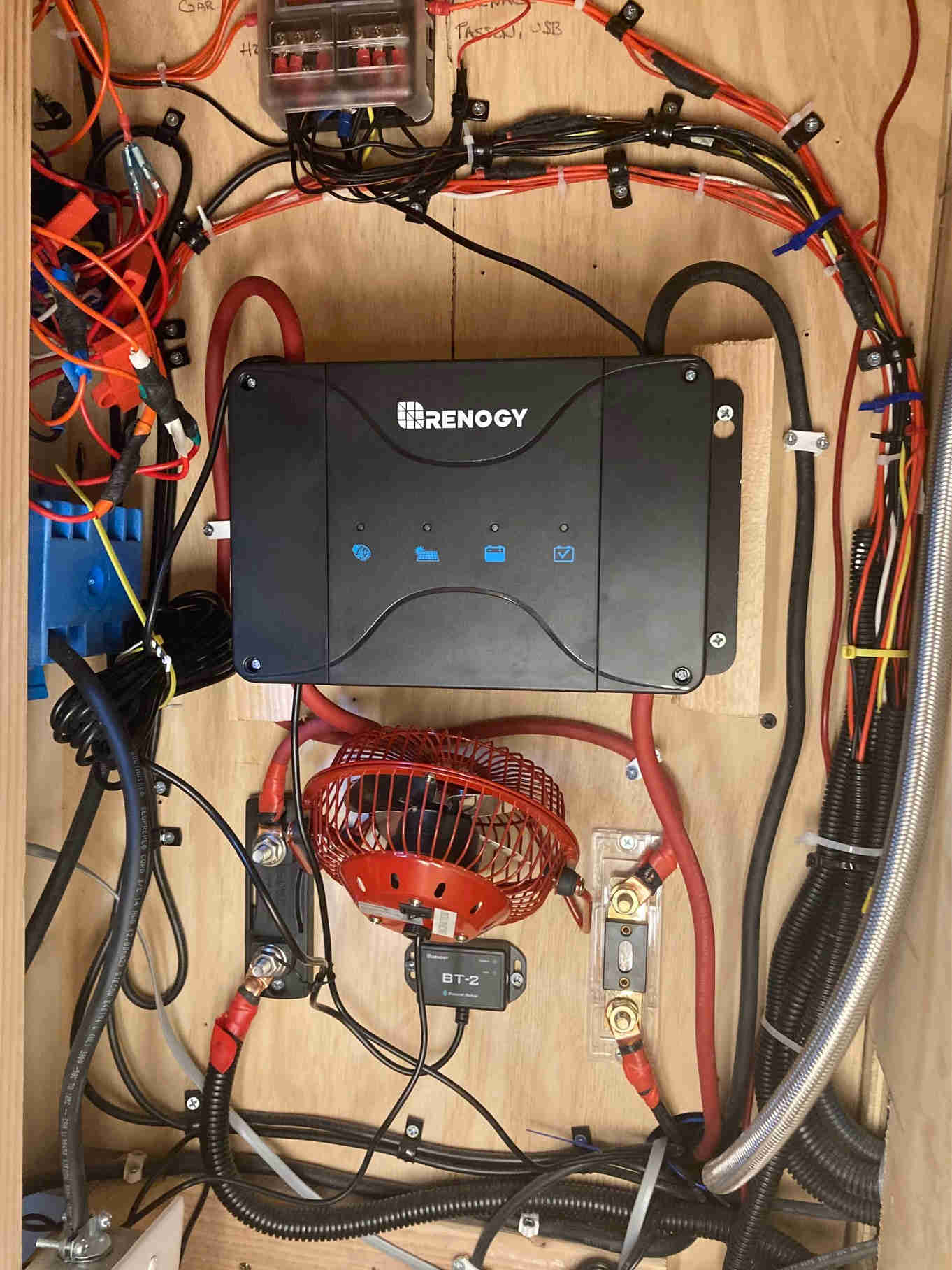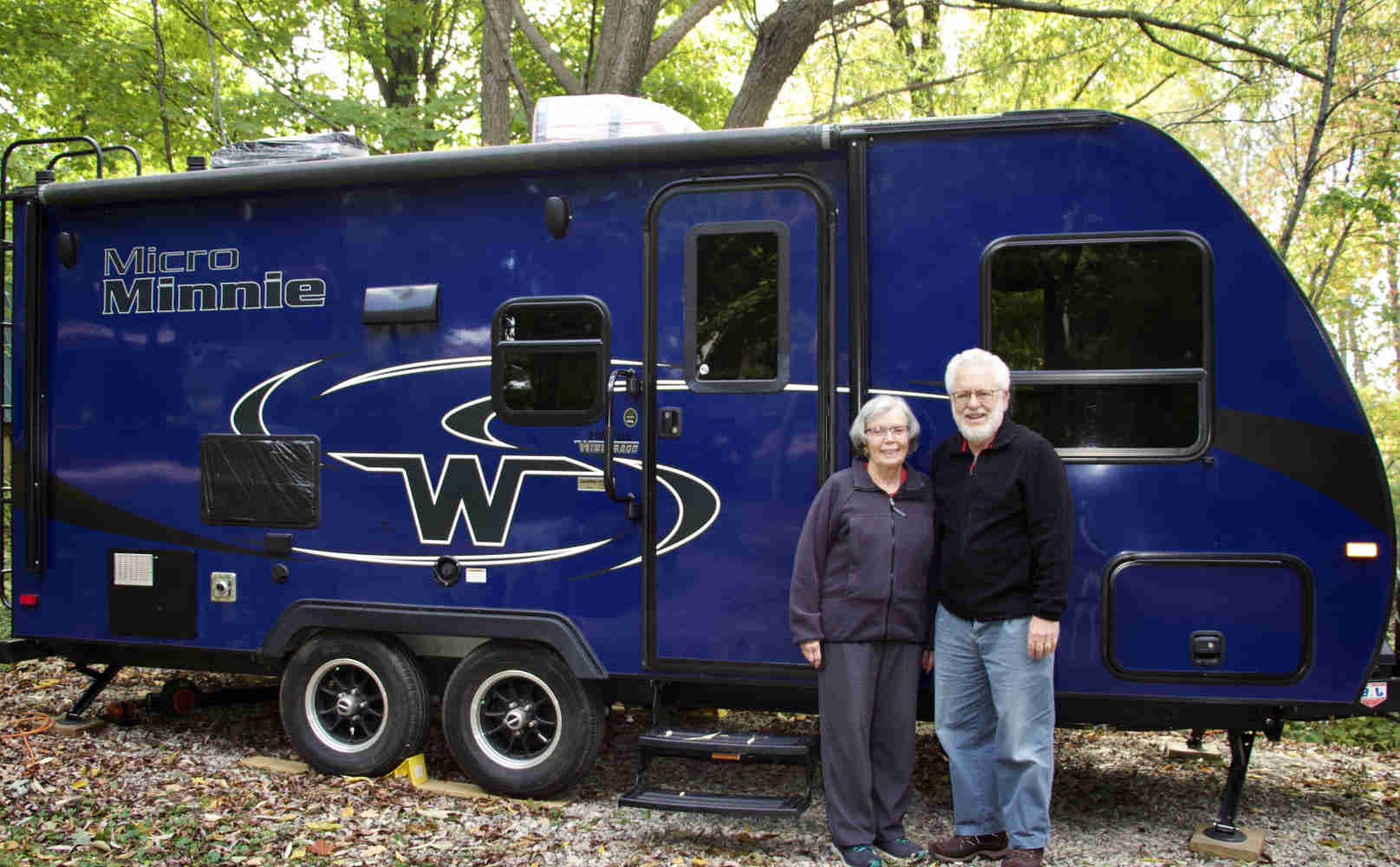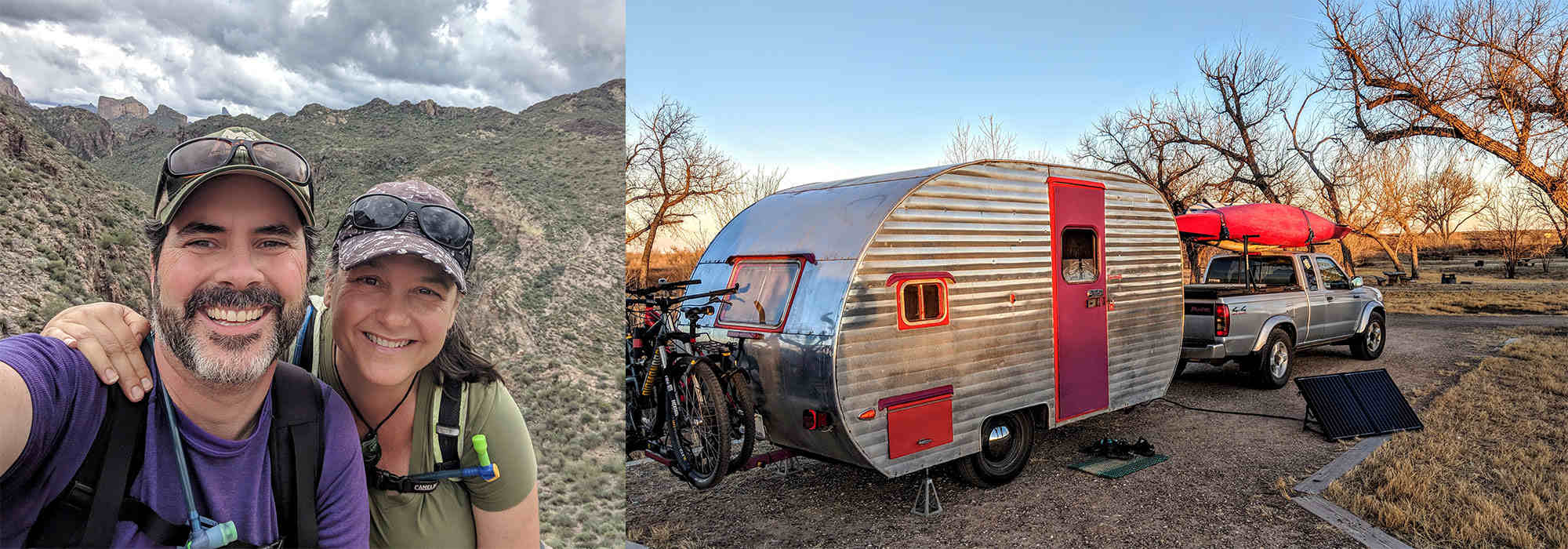What Does The "Solar Ready" Sticker On My New RV Mean & How Do I Use It?
What does “solar ready” actually mean?
Not much, to be honest. The new RV you’ve had your eye on comes with a sticker advertising that it is ready to connect to a solar panel. While this is a great selling feature, all it means is that a solar panel company paid for their proprietary solar panel plug to be installed during the manufacturing process. It doesn’t mean that the trailer comes pre-equipped with any solar components, although it does come with a scary sticker warning you to only use their panels. So, the company patiently waits for you to call and purchase their panels to connect to your new RV or trailer.

Does this mean that you have to buy solar equipment only from them?
Absolutely not. There are many ways to connect solar panels to your RV or trailer using both portable or more permanent roof-top mounted panels. You can either bypass the previously installed plug or make it work with the panels you do want to use.
How do I make the modifications?
In this blog, we’ll discuss modifying a “solar ready” trailer to work with a Renogy 200W Eclipse Suitcase (with built-in Voyager Charge Controller). These portable folding panel units are the ideal solar solution when you want to be able to put the panels out in the sun while still keeping your trailer parked in the shade.
Hutch’s parent’s purchased their new RV about 2 years ago. After doing a couple of short trips to get used to it, they discovered that they were gravitating to campsites with expensive electrical hook-ups. Hutch’s dad sleeps with a CPAP machine, and though it can run quite well on the house batteries, he was nervous about draining everything and being without power in the morning. Adding a solar panel to their rig was a natural next step so they can have more options with where they camp and more confidence in breaking away from electrical hook-ups.

They visited us in Maine at the campground & outdoor adventure center where we worked for the season. We had their new panel and equipment shipped to us so that we could help with their install. In between going out on the water, enjoying locally caught lobster, and taking in this beautiful place, we did a quick conversion to make their “solar ready” trailer become “solar powered.”

The solar panel plug that came with their trailer was an SAE style, with the polarity reversed so that it would only work with a certain company’s panel. In about 10 minutes and using only 3 tools, we switched the polarity to work with the Renogy Solar Suitcase that they purchased.

Check out our video to see this process in action!
What does polarity mean?
For those who didn’t study Electrical Engineering or simply don’t have a mind for it, here’s a layman’s explanation. Polarity refers to the electrical current flowing as intended from panel to battery and from battery to any appliances. All batteries have a positive and a negative terminal; think about jump-starting a car. The positive terminal is connected to a red wire and the negative to black (or sometimes white). Solar panels work the same way. By connecting the red (positive) lead from the panel to the positive terminal on the battery, and the black to the negative you are maintaining the correct polarity and everything works. Connecting them to the opposite terminal means at best nothing works, or at worse, damaging your equipment. Renogy’s products come with polarity protection, which keeps them from being damaged, but they still won’t work if they’re set up incorrectly.
Here’s an easy 4 step process for switching the polarity on your pre-installed plug so you can use the panels and equipment you prefer:
Step 1: Determine The Parts You Need.
In this case, the solar suitcase has MC4 connections coming from the panel, but the RV plug was an SAE. We needed an SAE to MC4 adaptor which is available via Renogy’s website.

Step 2: Determine Polarity.
Using a voltmeter, identify which side of the plug is positive and which is negative.

In this case the positive lead coming from the panel couldn’t connect to the MC4 adaptor’s positive lead. There were a couple of ways to address this, but the easiest seemed to switch the wires behind the plug on the inside of the trailer’s storage locker.
Step 3: Snip, Strip, Crimp.
Using a wire cutter/stripper, simply cut and expose both sets of wires coming out from behind the plug. Using the appropriate gauge wire crimp connection, connect the red wire to the black and the black to the red. Crimp snugly using a wire crimper tool.
Note: If you are ever nervous about cutting into wiring, contact a Renogy technician and they will walk you through it.

Step 4: Recheck Polarity & Connect To The Panel.
Using a voltmeter, determine that you have switched the polarity and that the positive lead is on the correct side of the plug. Connect the two MC4 connectors to the adapter and plug in the adaptor. Check the charge controller to make sure that everything is working correctly.

Best of luck going solar with your new RV! Your solar investment will pay dividends in the places you will be able to camp, without needing reservations or an electrical hook-up, and all without a noisy gas powered generator.

As Renogy Ambassadors and Affiliates, we’ll help you think through what you need and get you 10% off Renogy products by using this link and discount code (canlife). Solar will save you money in the long run because you will not need full hook-up sites at campgrounds and you can boondock on free public land all over the country. Contact us, we love to hear from our readers and love to help!
Shari Galiardi & David Hutchison have turned their higher education backgrounds, desire for life-long learning, and thirst for adventure travel into writing, photography, video production, and public speaking tours from coast to coast. Known to their friends as simply Shari & Hutch, you can learn more about their full-time, solar powered adventures on their website at freedominacan.com. Or, follow them on Facebook, Instagram, and YouTube as “Freedom in a Can.”
See other related articles at Renogy:
Solar Panels 101: A Beginner's Guide
The Ultimate Guide To DIY Off-Grid Solar Systems
Do solar panels increase home value
how efficient are solar panels
How Many Solar Panels Do I Need








